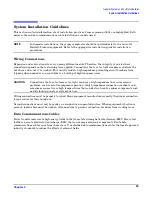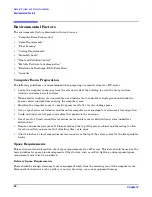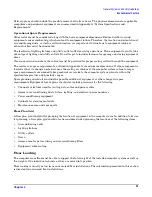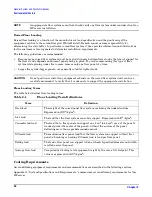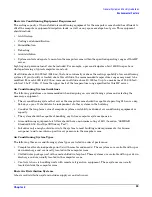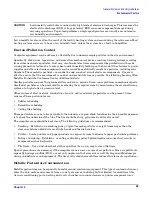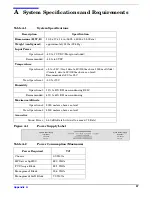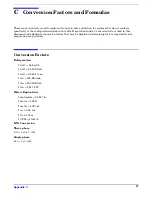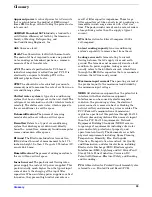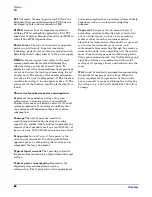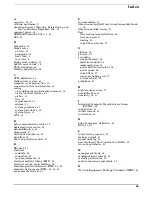
Glossary
43
Glossary
Apparent power
A value of power for AC circuits
that is calculated as the product of RMS current
times RMS voltage, without taking the power factor
into account.
ASHRAE Standard 52-76
Industry standard for
air filtration efficiency set forth by the American
Society of Heating, Refrigerating, and
Air-Conditioning Engineers, Inc.
ASL
Above sea level.
Btu/h
The abbreviation for British thermal units.
The amount of heat required to raise one pound of
water one degree fahrenheit per hour, a common
measure of heat transfer rate.
cPCI
The newest specification for PCI-based
industrial computers is called Compact PCI. It is
electrically a superset of desktop PCI with a
different physical form factor.
CFM
The abbreviation for cubic feet per minute,
commonly used to measure the rate of air flow in an
air conditioning system.
Chilled water system
A type of air conditioning
system that has no refrigerant in the unit itself. The
refrigerant is contained in a chiller, which is located
remotely. The chiller cools water, which is piped to
the air conditioner to cool the space.
Dehumidification
The process of removing
moisture from the air within a critical space.
Downflow
Refers to a type of air conditioning
system that discharges air downward, directly
beneath a raised floor, commonly found in computer
rooms and modern office spaces.
EIA unit
The Electronic Industries Association
(EIA) defines this unit of measurement to be 1.75
inches in height. So then, 1U equals 1.75 inches (1U
equals 44.45 mm).
Humidification
The process of adding moisture to
the air within a critical space.
Inrush current
The peak current flowing into a
power supply the instant AC power is applied. This
peak is usually much higher than the typical input
current due to the charging of the input filter
capacitors. When switching power supplies are first
turned on, they present high initial currents as a
result of filter capacitor impedance. These large
filter capacitors act like a short circuit, producing an
immediate inrush surge current with a fast rise
time. The peak inrush current can be several orders
of magnitude greater than the supply's typical
current.
KVA
Abbreviation for kilovolt-amperes (1000 x
volt-amperes).
Latent cooling capacity
An air conditioning
system's capability to remove heat from the air.
Leakage current
A term relating to current
flowing between the AC supply wires and earth
ground. The term does not necessarily denote a fault
condition. In power supplies, leakage current
usually refers to the 60 Hertz current, which flows
through the EMI filter capacitors that are connected
between the AC lines and ground.
Maximum input current
The operating current of
the product equal to the maximum load divided by
the minimum input voltage.
NEBS
All electronic equipment has the potential to
interfere with other electronic equipment.
Interference can be caused by electromagnetic
radiation, the grounding system, the electrical
power connection, excessive heat or blocking the
natural airflow, and connecting wires or cables. The
FCC (Federal Communications Commission)
regulates a portion of this problem through Part 15
of their rules and regulations. Even more stringent
than the FCC Part 15 requirements, Network
Equipment Building Standards (NEBS) covers a
large range of requirements including criteria for
personnel safety, protection of property, and
operational continuity. The documents cover both
physical requirements including: Space Planning,
Temperature, Humidity, Fire, Earthquake,
Vibration, Transportation, Acoustical, Air Quality
and Illumination; and electrical criteria including:
Electrostatic Discharge (ESD), Electromagnetic
Interference (EMI), Lightning and AC Power Fault,
Steady State Power Induction, Corrosion, DC
Potential Difference, Electrical Safety and Bonding
and Grounding.
PCA
Abbreviation for Printed Circuit Assembly also
referred to as a Printed Circuit Board (PCB).

